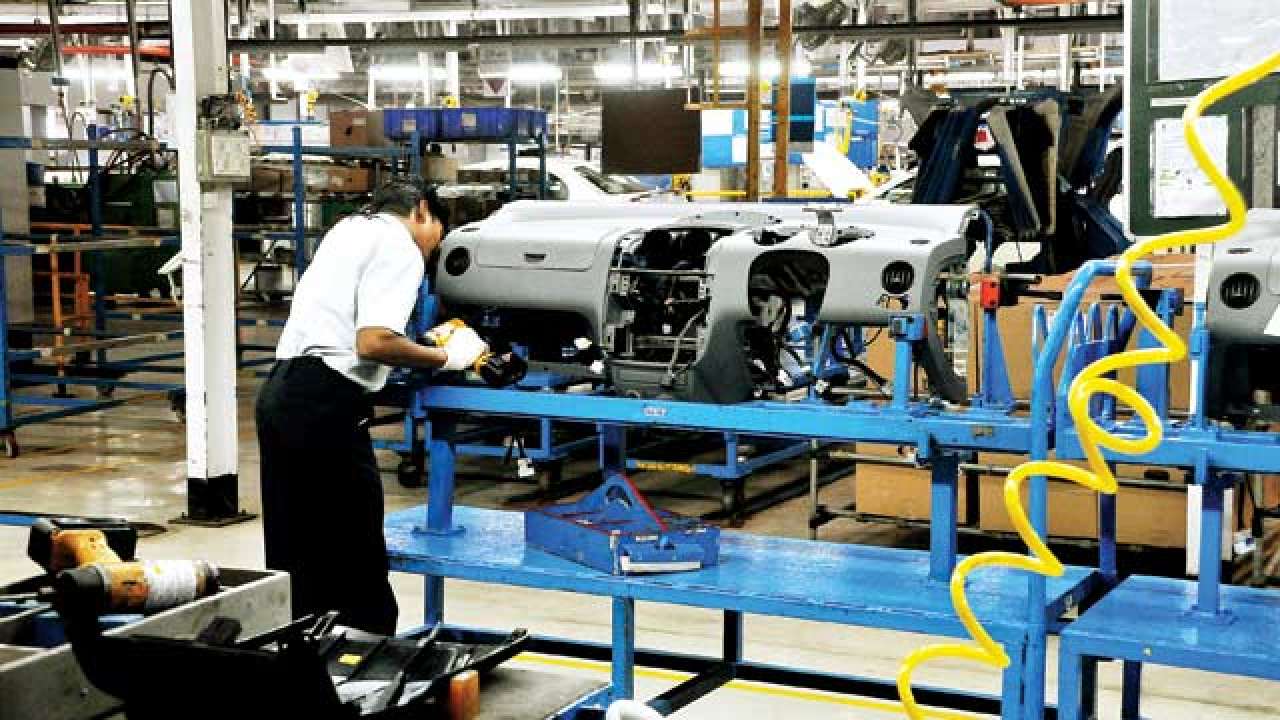
India’s share of manufacturing in Gross Value Added (GVA) at basic prices has been hovering around 14.8 per cent-17.9 per cent during 2011-12 to 2016-17, the peak was achieved in 2013. On THE said parameter, India lags behind its Asian counterparts like China (29.7 per cent), South Korea (29 per cent) and Thailand (27 per cent). India’s economic growth, global competitiveness, and social progress will not rest on a handful of sectors. The country’s ambition to be amongst the top three economies calls for a greater share of manufacturing, possibly closer to above mentioned Asian counterparts.
The National Manufacturing Policy (NMP)-2011 emphasises on increasing manufacturing sector growth to 12-14 per cent and achieve 25 per cent share of manufacturing by 2022. Further, through manufacturing, the government is looking to create an additional 100 million jobs by 2022. The NMP identifies industry verticals that need special attention. They include: (1) employment intensive industries like textile, (2) capital goods such as machine tools, heavy electrical equipment, heavy transport, earth moving and mining equipment, (3) industries with strategic significance like aerospace, shipping, IT hardware and electronics, telecommunication equipment, defence equipment, and solar energy, (4) Industries where India enjoys a competitive advantage such as automobiles, pharmaceuticals, and medical equipment, and (5) Small and Medium Enterprises (SMEs), which contribute 45 per cent of manufacturing output.
India needs transformative approaches to create globally competitive manufacturing ecosystems, which may propel the share of manufacturing sector to 25 per cent from 16.6 per cent in 2016-17. To build a lucrative manufacturing ecosystem, the government has initiated myriad of steps which include setting up an industrial corridor, relaxing norms for foreign direct investment, and launching the ‘Make in India’ programme.
In the past, manufacturing policy orientation was centred on capital and resource intensive large manufacturing enterprises. However, business dynamics are rapidly changing resulting in a global push towards decentralised manufacturing. Thereby, the role of SMEs should assume greater prominence than before. The success of Indian SMEs not only rests on the domestic market, but also largely on access to foreign markets. The World Bank acknowledges India’s progressive steps to remove bottlenecks, facilitate smooth business operations, and graceful exit, could benefit investors.
Despite availability of low-cost labour and material, India struggles to catapult its manufacturing industry. Still, the manufacturing industry faces a host of challenges related to land acquisition, labour laws, and availability of basic infrastructure like road, water, and electricity.
India must learn from the successful manufacturing driven economies like Germany, where total R&D expenditure as a percentage of Gross National Product increased from 1.3 per cent in 1962 to 2.9 per cent in the late 1980s. Currently Germany invests close to 0.7 per cent of GDP in energy efficiency. India must enhance its R&D expenditure from 0.63 per cent of GDP, which is much lower than world average of 2.23 per cent. According to World Bank, in 2015, R&D expenditure percentage to GDP in Israel, Republic of Korea, Japan, Sweden, Germany, the US, China, and France stood at 4.27 per cent, 4.23 per cent, 3.28 per cent, 3.26 per cent, 2.88 per cent, 2.79 per cent, 2.7 per cent, and 2.23 per cent respectively. In 1996 China and Republic of Korea spent 0.56 per cent and 2.24 per cent of their GDP respectively on R&D, which means over last two decades these two nations doubled R&D expenditure and aggressive nurtured innovations resulting in producing globally acceptable brands.
Chinese manufacturing firms spent 0.88 per cent of their operating revenue for internal R&D in 2013, ‘Made in China-2025’ policy document sets a target of 1.26 per cent and 1.68 per cent by 2020 and 2025 respectively. Further, China intends to enhance digital R&D and design tool penetration from 58 per cent in 2015 to 84 per cent by 2025. China is steadily moving towards improving quality-control technology, and implementing better quality management mechanisms, and assuring delivery of brand promise, thereby strengthening image of ‘Made in China’ brand. Strategically, China is moving away from the conventional position of cost-competitive manufacturing base to offering strong and valued brands to regional and international markets.
To compete with the best, India must follow the path most of the successful manufacturing driven nations like Germany, Republic of Korea, and China already created. Therefore, Science, Technology and Innovation Policy, 2013 has set a target of increasing R&D expenditure to 2 per cent by 2018. Unfortunately, progress on this front is slower than expected.
Indian manufacturers have to battle hard to create their own brand image, like the Japanese in 1970-80s, the Koreans in 1990s, and the Chinese in 2000s.
As ‘Country of Origin’ impacts brand image and brand equity, Indian manufacturers must build point-of-parity with Japanese, Korean, and Chinese manufacturers. Further, Indian manufactures must establish point-of-differences to enhance global acceptance.
Indian companies like Infosys, Wipro, and TCS have proven that global market is fairly open to brands originating from India. Companies in manufacturing domain may take a leaf out of the IT industry and create global brands.
The author is the Head of Department of Management Studies at the Rajiv Gandhi Institute of Petroleum Technology